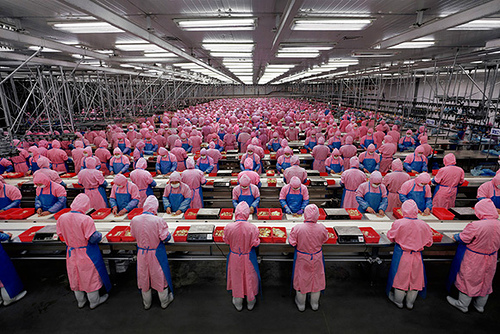While it may not be good for our environment, industrialization has been good for our wallets. Transitioning from an agriculture-based economy to a manufacturing one allows a country to rapidly increase its wealth (and to contribute further wealth to other nations supplying the resources). In this century, China is, of course, the example writ large.
A post-Industrial economy in which manufacturing is no longer as valuable would seem to be the new reality, and a Disney economy of service and entertainment isn’t very transferable. In a Bloomberg View column, Noah Smith attempts to figure out a way forward for nations that are playing catch up in the Information Age. An excerpt:
The main engine of global growth since 2000 has been the rapid industrialization of China. By channeling the vast savings of its population into capital investment, and by rapidly absorbing technology from advanced countries, China was able to carry out the most stupendous modernization in history, moving hundreds of millions of farmers from rural areas to cities. That in turn powered the growth of resource-exporting countries such as Brazil, Russia and many developing nations that sold their oil, metals and other resources to the new workshop of the world.
The problem is that China’s recent slowdown from 10 percent annual growth to about 7 percent is only the beginning. The recent drops in housing and stock prices are harbingers of a further economic moderation. That is inevitable, since no country can grow at a breakneck pace forever. And with the slowing of China, Brazil and Russia have been slowing as well — the heyday of the BRICs (Brazil, Russia, India and China) is over.
But the really worrying question is: What if other nations can’t pick up the slack when China slows? What if China is the last country to follow the tried-and-true path of industrialization?
There is really only one time-tested way for a country to get rich. It moves farmers to factories and imports foreign manufacturing technology. When you move surplus farmers to cities, their productivity soars — this is the so-called dual-sector model of economic development pioneered by economist W. Arthur Lewis. So far, no country has reached high levels of income by moving farmers to service jobs en masse. Which leads us to conclude that there is something unique about manufacturing.•
Tags: Noah Smith

